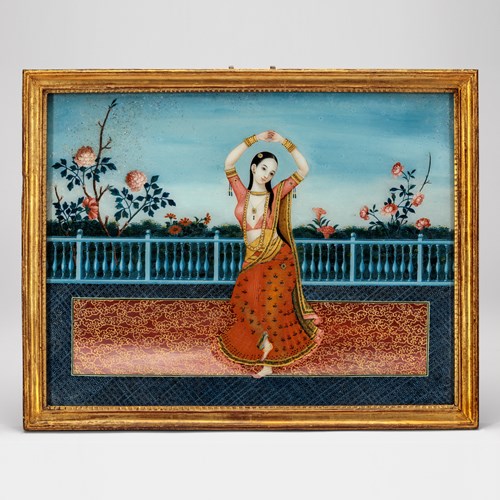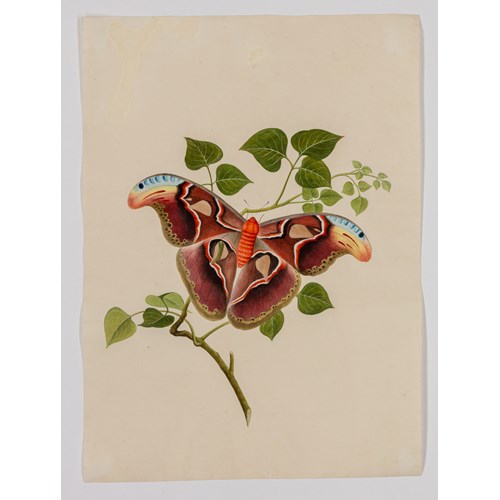Marketplace
Silver Container (Bezoar or Goa Stone)
Silver Container (Bezoar or Goa Stone)
Period 17th century
Origin Goa, India
Medium silver
Dimension 6.5 cm (2¹/₂ inches)
This spherical silver and silver-gilt container is formed of two halves and joined at the centre. It consists of an inner layer of silver-gilt covered by an outer layer of pierced silver. The apex of each half bears a solid flower motif with radiating petals, to which the pierced silver decorative scheme joins in the form of symmetrical, scrolling foliage.
A rare number of examples of such containers, either in silver or sometimes gold, feature their original contents: a Goa stone. Goa, or cordial, stones originated in the apothecary of the Colégio de São Paulo in Goa, and were an invention of the Florentine lay brother Gaspar António in the mid-16th century. These were medicinal products and substitutes for the rare and very valuable bezoar stones - stomach secretions of an organic and mineral nature not digested by the bezoar goat - of Persian origin, which at the time had become difficult to acquire. According to most of the recipes that have survived, these stones, spherical in shape and covered with gold leaf, were made from musk, oriental bezoar stones, ambergris, seed pearls, ground antelope or deer horn, terra sigillata, red and white coral, emerald, topaz, ruby, jacinth and sapphire. Used in moderation, and scraped, ground, diluted into elixirs or merely immersed in liquid, these valuable stones would occasionally be stored and displayed in their own precious boxes and containers, made from gold or silver.
Similar examples to this silver container can be found in the Metropolitan Museum of Art, New York, Accession Number 1980.228.1, .2a, b, .3, and the British Museum, London, Accession Number 1978,1002.807.
Stock no.: A5028
A rare number of examples of such containers, either in silver or sometimes gold, feature their original contents: a Goa stone. Goa, or cordial, stones originated in the apothecary of the Colégio de São Paulo in Goa, and were an invention of the Florentine lay brother Gaspar António in the mid-16th century. These were medicinal products and substitutes for the rare and very valuable bezoar stones - stomach secretions of an organic and mineral nature not digested by the bezoar goat - of Persian origin, which at the time had become difficult to acquire. According to most of the recipes that have survived, these stones, spherical in shape and covered with gold leaf, were made from musk, oriental bezoar stones, ambergris, seed pearls, ground antelope or deer horn, terra sigillata, red and white coral, emerald, topaz, ruby, jacinth and sapphire. Used in moderation, and scraped, ground, diluted into elixirs or merely immersed in liquid, these valuable stones would occasionally be stored and displayed in their own precious boxes and containers, made from gold or silver.
Similar examples to this silver container can be found in the Metropolitan Museum of Art, New York, Accession Number 1980.228.1, .2a, b, .3, and the British Museum, London, Accession Number 1978,1002.807.
Stock no.: A5028
Period: 17th century
Origin: Goa, India
Medium: silver
Dimension: 6.5 cm (2¹/₂ inches)
More artworks from the Gallery


_T638839371494677624.jpg?width=2000&height=2000&mode=max&scale=both&qlt=90)






